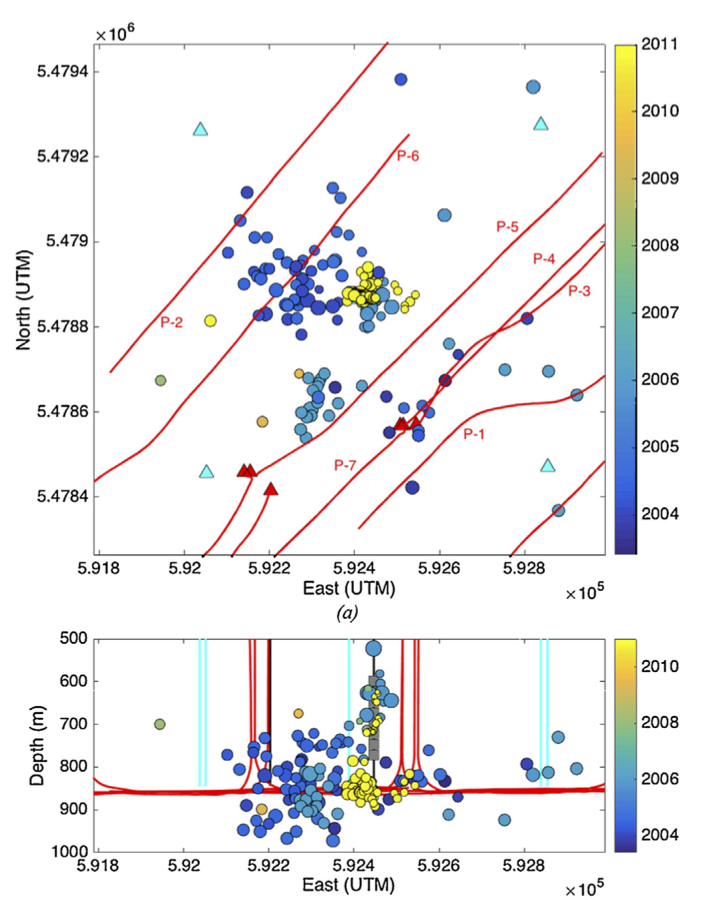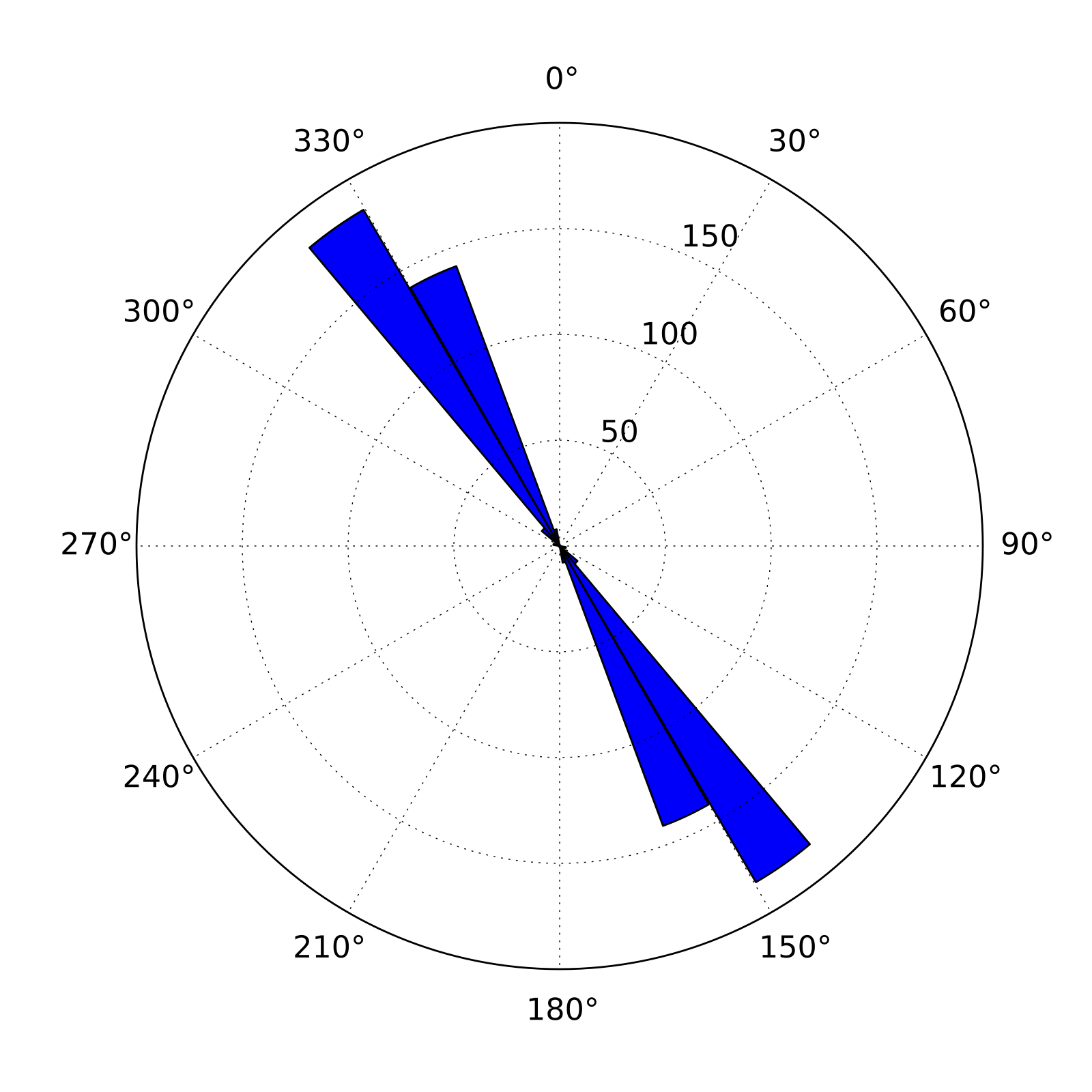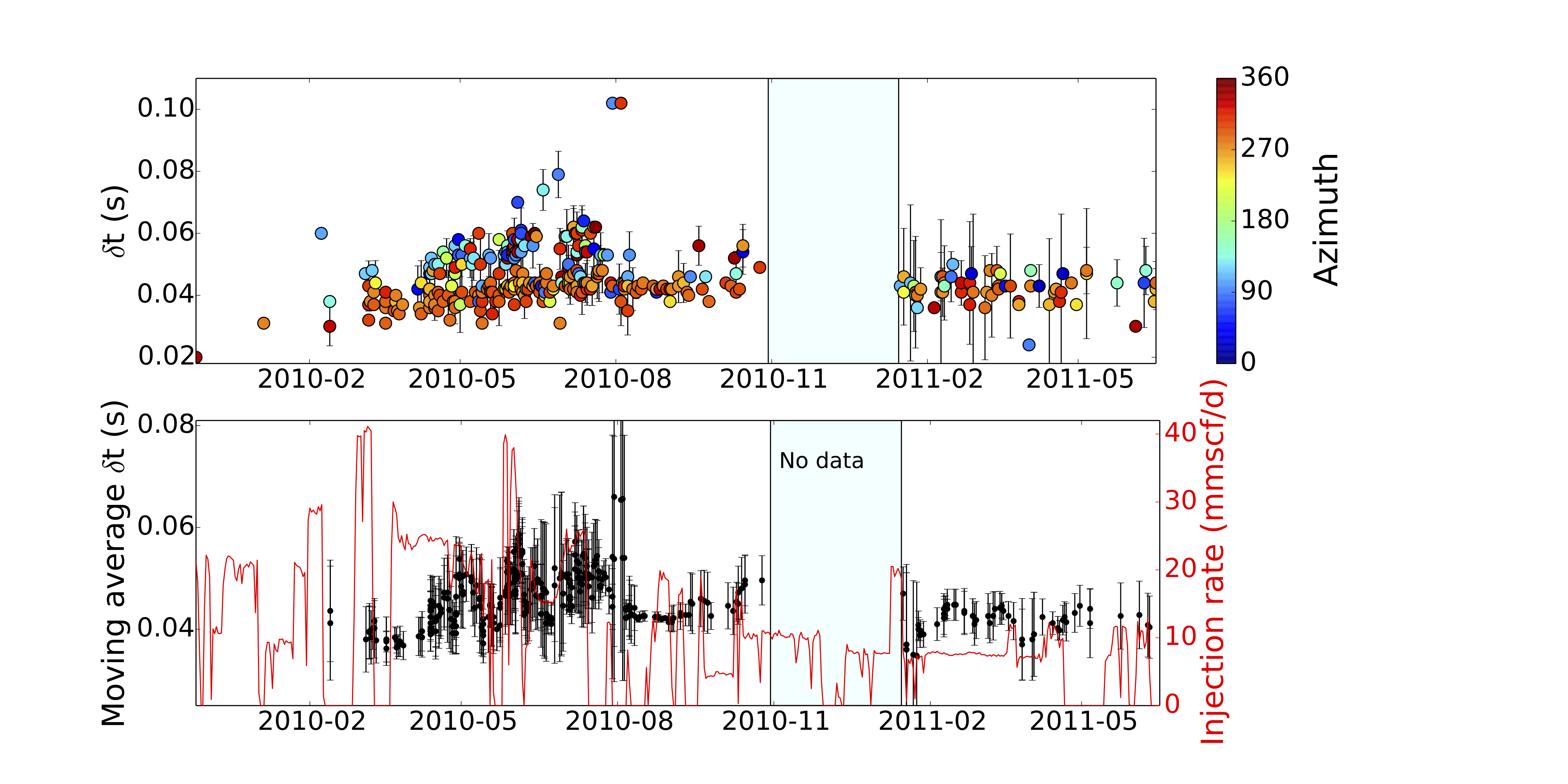Research Projects
The BCOG group has been involved in research on three major CCS projects; the In Salah project in Algeria and the Weyburn and Aquistore projects in Canada. These projects have all deployed passive seismic monitoring arrays. The group is also involved in monitoring the CMC Research Institutes’ Field Research Station (FRS) in Alberta, Canada, where a wide range of monitoring techniques will be tested to map and measure the impact of carbon capture and storage. CO2 injection is expected at this site in late 2016.
Weyburn EOR-CCS project, Saskatchewan, Canada
At Weyburn a downhole array of 8 triaxial geophones was placed near to an injection pattern. Around 100 events were recorded over 5 years of injection, representing an extremely low rate of seismicity. This indicates that the injected CO2 is moving through the reservoir without causing much deformation. The recorded events are generally located close to the producing wells on either side of the injection point. This is interesting, because it was anticipated that microseismic activity would be located around the injection site. However, geomechanical models have shown that the patterns of microseismicity are to be expected, and that they do not present any risk to storage security.
 Map and cross section of microseismic event locations. Microseismic events are coloured by occurrence date, and the size of the marker indicated event magnitudes (which range from −3.5 to −0.5). The nearby horizontal production wells are marked by the red lines, blue lines indicate injection wells (Verdon, Int. J. Greenhouse Gas Control, 2016). |
In Salah CCS project, Algeria
The In Salah CO2 storage project at the gas-producing Krechba field in Algeria was a pioneering onshore CCS project that began injection in 2004. Between 2004 and 2011, nearly 4Mt of CO2 was injected by three injection wells. A microseismic monitoring array was in 2009 and over 9000 seismic events were recorded with magnitudes <1.7. Automated shear-wave splitting analysis was applied to the data to determine fracture orientation at the site and a variation in delay time between fast and slow shear-wave was dependent on injection. This lead to the conclusion that the injection is opening fractures around the injection well that then close as pressure reduces. This indicates there is no long-term CO2 leakage risk due to the creation of fractures by the injection. A geomechanical reconstruction was used to simulate the locations, orientations and sizes of pre-existing fractures in the In Salah reservoir. The initial stress conditions, in combination with a history matched reservoir flow model, are used to determine when and where these fractures exceed Mohr–Coulomb limits, triggering failure. The resulting model micro-earthquake event locations, rates of seismicity, and event magnitudes are in good agreement with observations.
  Histogram of the strike of the fast shear-wave and the delay time, δt, between the fast and slow shear-waves as a function of time, measured using automated shear-wave splitting analysis. The red line is the CO2 injection rate and the black line is the 5 point moving average of δt values (Stork et al., Int. J. Greenhouse Gas Control, 2015). |
Aquistore project, Saskatchewan, Canada
Aquistore is the CO2 storage site for the world's first commercial post-combustion CO2 capture, transportation, utilization, and storage project from a coal-fired electrical generating station, Boundary Dam. Injection began in April 2015 and in the first year of operation, injected >50,000 tonnes of CO2. So far no induced seismicity has been associated with the project. Seismic monitoring is continuing and research using the recorded noise, e.g. ambient noise interferometry, is ongoing.

